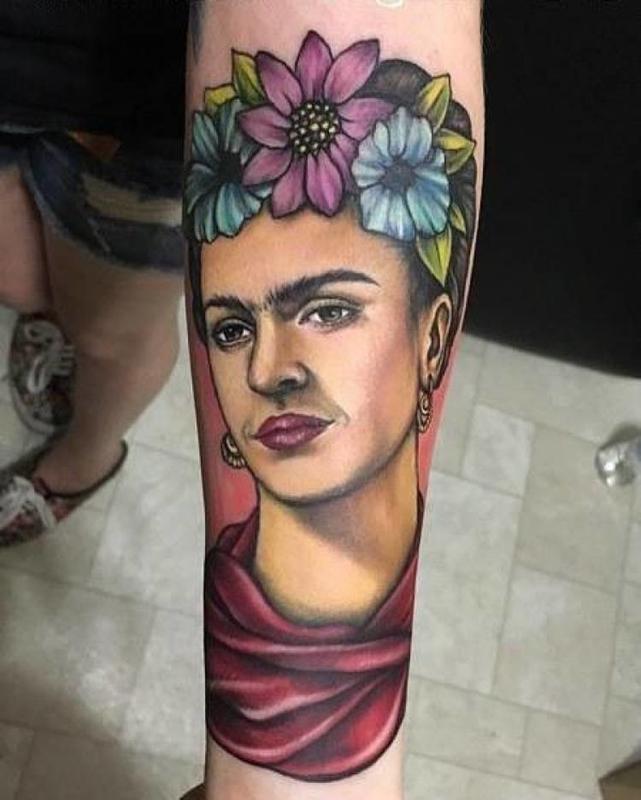
Everybody we've seen on this list so far has been a singer, an actor, or Kim Kardashian. Here's an entry from a completely different theater of the arts; Frida Kahlo. The Mexican artist was famous for her portraits; both of herself and of others. She was a trailblazer of her time, pushing boundaries for women in the arts, and today she's revered as an icon both of feminists and of the LGBTQ community. A constant theme of her art was the idea of giving a voice to the voiceless. Her skill made her an artist, but her beliefs made her a hero.
What better way is there to pay tribute to a great artist than to commission some art of your own? Fortunately, Kahlo painted so many self-portraits that there were plenty to draw inspiration from. It also makes the work of the tattoo artist easier if they're copying a drawing of a person rather than a photo of the real person; it means they don't have to worry about being photo-realistic with their own work!
When we think of inventors, the image that comes to mind is usually that of a frazzled scientist toiling away in a lab, not celebrities pulled from the pages of Us Weekly. However, a number of well-known public figures hold patents for various innovations. Some are related to the work that made them famous, while others are offshoots of hobbies or just a single great idea.
Part of guitar wizard Eddie Van Halen's signature sound was his two-handed tapping technique, but letting all ten fingers fly while simultaneously holding up the guitar's neck could get a bit tricky. Van Halen came up with a novel way to get around this problem, though; he invented a support (top) that could flip out of the back of his axe's body to raise and stabilize the fretboard so he could tap out searing songs like "Eruption." While Van Halen was obviously interested in improving his guitar work, the patent application he filed in 1985 notes that the device would work with any stringed instrument. Want to tap out a scorching mandolin solo? Find someone selling Eddie's device.
It’s probably not surprising that James Cameron—who designed a submersible to take him to the deepest known part of the ocean—will often invent technology to make his films if what he needs doesn’t exist. He holds a number of patents, including US Patent No. 4996938, “apparatus for propelling a user in an underwater environment,” that he and his brother, Michael, created to film The Abyss and patented in 1989. The device is basically an underwater dolly equipped with propellers that makes it easy for a camera operator to maneuver in the water—and allowed Cameron to capture the shots he wanted for the 1989 film, part of which was filmed in an abandoned nuclear reactor.
In 1987 Jamie Lee Curtis designed and patented a disposable diaper that included a waterproof pocket that held baby wipes. She hasn't profited from her idea yet, though, since she refuses to license the patent until diaper companies make biodegradable products.
You know him as a rock legend, but Neil Young also loves trains—so much that he owns a stake in a model train manufacturing company and has an extensive collection. He also holds seven patents related to model trains, including Patent No. US5441223, "Model train controller using electromagnetic field between track and ground."